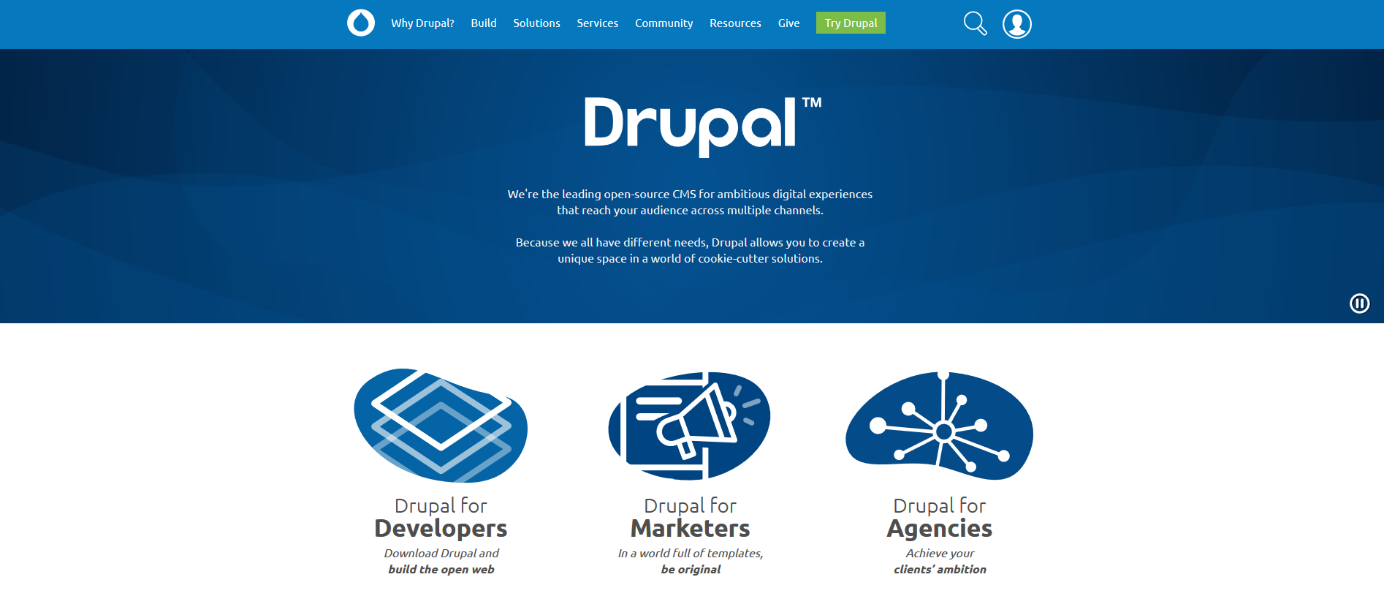
And we ensure that your company will benefit.ĭrupal’s biggest strength is its rich ecosystem of contributed modules. Multiple languages, structured data, ambitious landing pages or a decoupled front end? Do you want to build headless solutions or integrate channels, such as apps? All of these are possible with Drupal. However, this issue is going to be addressed.ĭrupal is a good choice for medium to large websites which requires a high-level, robust and extensible CMS but there can be too many bells and whistles for simple blog sites or brochureware.Drupal is the open-source enterprise content management system (CMS) for complex, highly customisable digital experiences for more than 20 years. Some users find the administration interface confusing and awkward to use.It is memory and processor hungry so may place too much of a strain on less powerful computers.May be too sophisticated and a drain on resources for smaller websites.The WYSIWYG editor is an add-on rather than part of the actual system (core).This has been reported by some but not all users. Steep, infinite learning curve which is off-putting to novice users.The perfect CMS does not exist and whilst these systems have proved to be highly effective and efficient they have a few gripes which include: Disadvantages of DrupalĮvery system has its pros and cons and Drupal is no different. These are just some of the many features of Drupal. Ability to support more than 70 international languages which is good news for companies who operate in global markets.User friendly and search engine friendly.Easy integration for social networking, e.g.Ability to maintain a site via the user administration system with the option to extend this even further.Template system which enables users to choose a particular theme and/or the option to design a template for use by others.The ability to extend a website via the thousands of add-ons which will meet any requirement.



The content is produced using a WYSIWYG editor (available as an extension) which is a feature common to many of these systems and is particularly aimed at the non-technical user. About Drupalĭrupal is written in PHP with a MySQL database to store content and data. It is suitable for non-technical users who are looking to build a basic website and caters equally well for experienced developers (with good programming skills) by means of a highly developed API. (Source: This CMS is based upon a worldwide community who provide support, knowledge and expertise with the aim of further improving this software.ĭrupal can be used by both novices and expert users. However, the word ‘drop’ is actually a misspelling of the Dutch word ‘dorp’or village which refers to the community ethos of this CMS. This community based approach means that everyone can work towards improving Drupal and ensuring that it remains at the forefront of CMS technology.ĭrupal was released in 2001: the name is an English derivation of the Dutch word ‘druppel’which means a ‘drop’or ‘water droplet’.

#Cms drupal plus#
This means that it is free to download, manage and share, plus there is the opportunity to contribute to the Drupal project. It is commonly used to build websites but is also used to create commercial applications as well as being a form of knowledge management.Ī core feature is the fact that it is distributed under the terms of the ‘GPL’or ‘GNU General Public Licence’. An open source CMS which has become popular with a great many people in all corners of the globe.


 0 kommentar(er)
0 kommentar(er)
